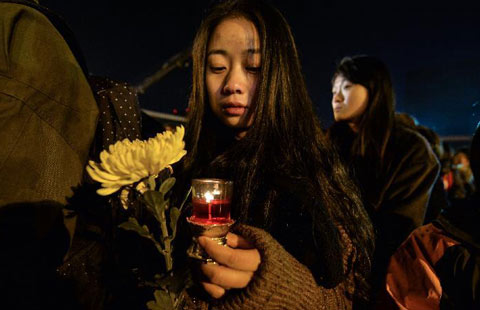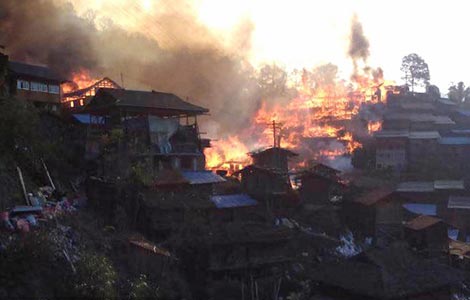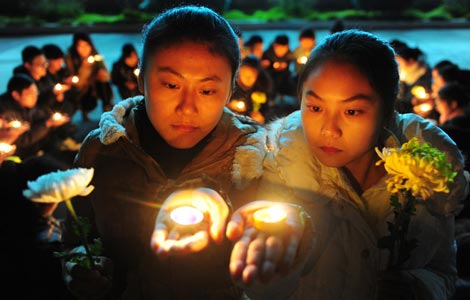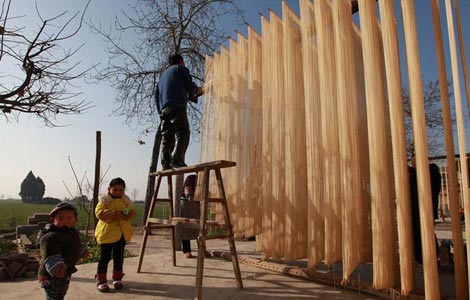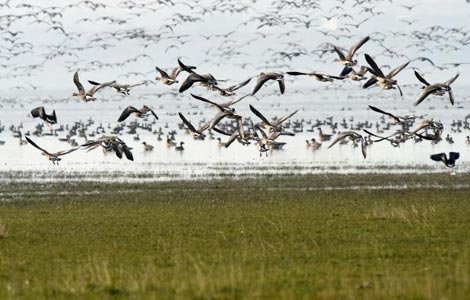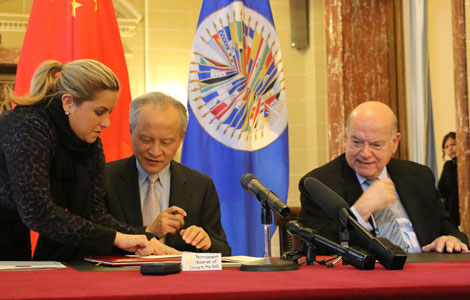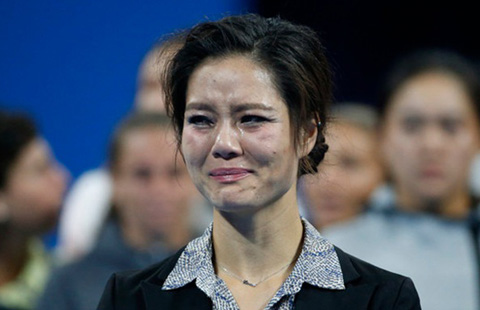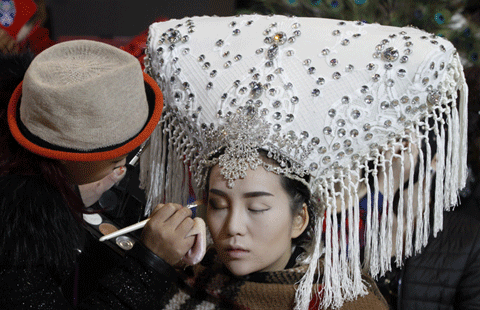Memories of blood and terror - Revisiting Nanjing
Updated: 2014-12-12 20:43
(Xinhua)
|
|||||||||
REMEMBRANCE
Aug. 15, 1945, the day the Japanese surrendered, will always be a day Wu remembers.
"I was helping in our restaurant, when I heard a man's voice from the radio. His voice sounded slow and somber," he said.
When he looked out into the alley, he saw the Japanese troops kneeling down. The Japanese had lost the war.
In the decades that have passed since these tragedies, the house where Chang's relatives died is now the site of an apartment building and Wu's restaurant is now a cell phone store.
But the names of their loved ones are etched, among with 10,000 more, on the 70-meter-long memorial wall in the Memorial Hall of the Victims of the Nanjing Massacre by Japanese Invaders.
More names are to be added, as experts generally agree that the number of victims to be nearer to 300,000.
Sun Zhaiwei, a research fellow with the Jiangsu provincial academy of social sciences, spent more than 30 years reviewing the records of charity organizations and the Kuomintang government. He confirmed that some 246,000 bodies were buried.
But tens of thousands of bodies were thrown into the Yangtze River, never to be found.
When asked about the denial of the massacre by right-wing nationalists in Japan, both Chang and Wu became emotional.
"They are liars," Chang said, before continuing with flurry of vitriol. While Wu asked: "Are they even human?"
There are only around 100 survivors of the massacre still alive.
To ensure lessons will be learned and the truth heard, both Chang and Wu are penning memoirs.
"I want to let more people know about what really happened 77 years ago, which every generation should remember," Chang said.
Wu's only wish is: "To live to hear the Japanese sincerely apologize."
- Archive documents refute Nanjing Massacre denial
- Documents reveal body disposal of Nanjing Massacre
- China releases online videos documenting Nanjing Massacre
- China to mark Nanjing Massacre with full honors
- Students use puppetry to show Nanjing Massacre
- China releases CPC papers' coverage of Nanjing Massacre
- From survivors of Nanjing Massacre
- China releases school faculty's diary on Nanjing Massacre
Most Viewed
Editor's Picks

|

|
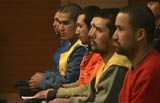
|

|
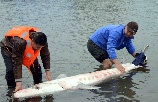
|

|
Today's Top News
China, Kazakhstan to sign $10b deals during Li's visit
Lima sets groundwork for Paris talks
HK police to clear last occupy site Monday
Nanjing memorial gains global media attention
UN climate change summit faces deadlock
Xi attends China's first memorial ceremony
Three pilot trade zones proposed
US big-data company expands into China
US Weekly

|

|
